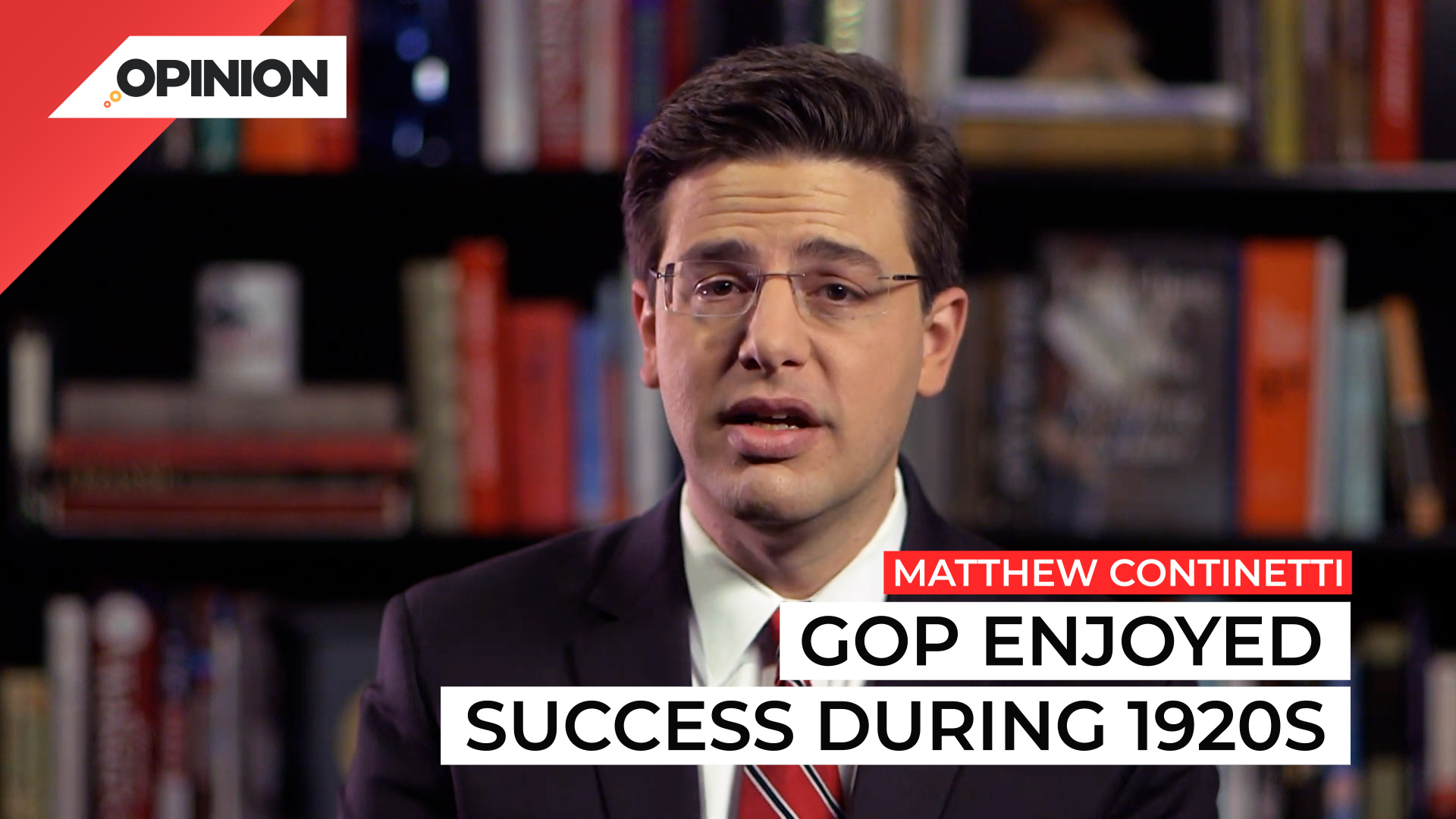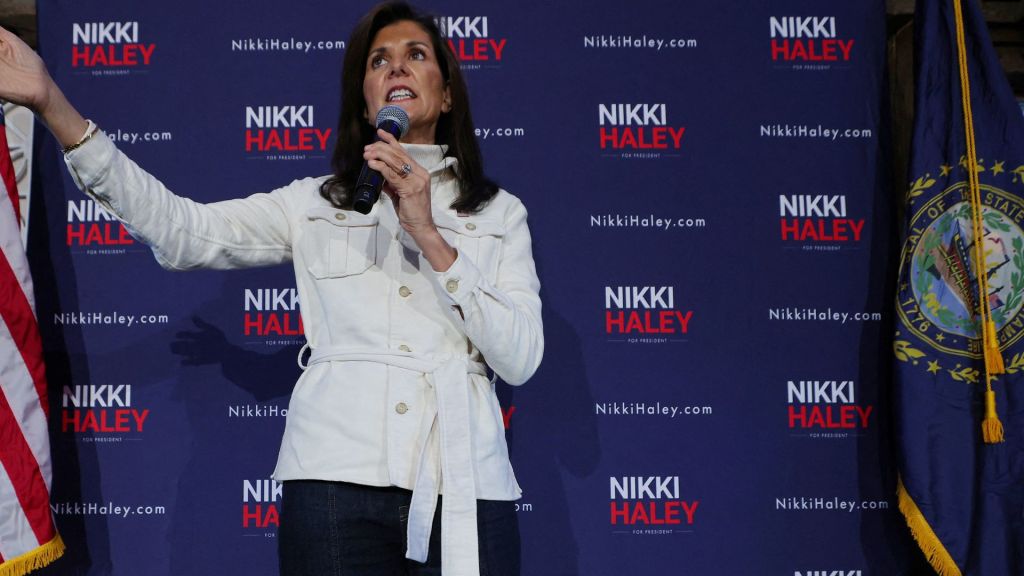
Commentary
-
Our commentary partners will help you reach your own conclusions on complex topics.
It’s hard to think of two presidents with less in common than Calvin Coolidge and Donald Trump. For one thing, Coolidge held a variety of public offices before becoming president on Aug. 2, 1923. Mr. Trump had no government or military experience before his inauguration in 2017.
Yet these personal differences obscure important political similarities. Both Coolidge and Trump staked their presidencies on voter satisfaction with broadly shared prosperity. Both supported restricting immigration into the United States. Both wanted to protect American industry from foreign competition. Both wanted to avoid overseas entanglements.
As I explain in my new book, The Right: The Hundred Year War for American Conservatism, Trump’s views now dominate the Republican Party. For anyone who grew up with the GOP of Ronald Reagan, this can be strange and bewildering.
But in many respects, it’s a return to the principles of the 1920s, of Coolidge and his predecessor Warren Harding. Their conservatism appealed to an American electorate that had soured on its experiences with the Progressive movement and with World War One.
“Our supreme task,” President Harding said in his inaugural address, “is the resumption of our onward, normal way.”
For Harding, “normalcy” meant nation-building at home. He raised tariffs and restricted imports. And he venerated the Constitution.
Calvin Coolidge did not depart from this constitutionalist path. To Coolidge, the Declaration of Independence and the Constitution offered the last words in a centuries-long argument over popular sovereignty. Coolidge argued that success in self-government was related to religious faith. Political freedom depended on traditional morality and self-control. He called on Americans to preserve the inheritance of the Founders.
Harding and Coolidge’s conservatism was delegitimized by the crises that followed their presidencies. The Great Depression robbed the right of its claim to promoting prosperity. Then World War II discredited the right’s noninterventionist foreign policy. What emerged from the rubble was a postwar conservative movement that embraced alliances, military intervention, forward defense, free trade and open immigration to defeat communism and fuel economic growth. This postwar conservative internationalism may have been an aberration.
Today, the GOP is reverting to its pre-World War II identity as the party of low taxes, economic protection, restricted immigration, wariness of foreign intervention and religious piety. This retro-Republicanism could turn out to be a popular mix, but history shows that it is also a combustible one. In its protectionism, resistance to immigration, religiosity, and antipathy to foreign entanglements, Donald Trump’s Make America Great Again movement resembles the conservatism of the 1920s—with one significant difference.
In the 1920s, the right was in charge. A century later, in the early 2020s, the right has been driven from power at the federal level. It has been locked out of the commanding heights of American culture. Its rhetoric has often veered into conspiracy theory.
Cultural estrangement and economic insecurity have made today’s Republicans much more open to government intervention in the market than their forebears. Harding and Coolidge stood for “normalcy” and “Americanism.”
Even when he was president, however, Trump stood outside the system. Trump did not maintain the status quo. He challenged it.
As the GOP has returned to its early 20th-century roots, it has struggled to persuade Americans that its agenda and spokesmen are within the mainstream. The right has benefited more from the false steps of its opponents than the popularity of its own ideas and leading figures.
All of which might give Republicans pause as they embrace the changes brought about by Donald Trump and look forward to the midterm election this November.
After all, the GOP enjoyed tremendous success during the 1920s—and then spent the next 40 years in the political wilderness.
-
Education, income becoming key variables in elections
Education, income level, geography, race and ethnicity are all key variables in estimating who voters might support. But the importance of these variables has changed in recent elections, as America’s demography, culture and political movements continue to evolve. Straight Arrow News contributor Matthew Continetti argues that education and income level have become more important than…
-
If we’re lucky, AOC and the Squad are on their way out
The Squad, comprised of eight left-wing House Democrats, has been openly critical of Israel both before and during Israel’s war with Hamas. As primaries approach, some of these House members are facing challenging political races. Straight Arrow News contributor Matthew Continetti delves into the backlash against the Squad and hopes its members will face a…
-
All bets are off in a Biden-Trump rematch
As the presidential primaries unfold, a Trump-Biden rematch in November appears increasingly likely. History suggests a smooth path to victory for incumbents like Joe Biden, but the scenario becomes far less predictable when that incumbent is running against another former president like Donald Trump. Straight Arrow News contributor Matthew Continetti highlights the rarity of a…
-
If America cuts off Ukraine aid, Putin will never stop aggression
The U.S. Senate is not expected to vote on a package for increased aid to Ukraine until early next year. Since the start of Russia’s full-scale invasion in February 2022, the United States has granted a total of $111 billion in aid to Ukraine, including a minimum of $45 billion allocated for military assistance. The…
-
Appalling silence on college campuses in the face of antisemitism
The Israel-Hamas war has raised tensions on U.S. college campuses, dividing students, faculty, and administrators alike. Campus protests, as well as hate crimes against both Jewish and Muslim victims, have all increased since Hamas’ Oct. 7 attack. Straight Arrow News contributor Matthew Continetti accuses university administrations of ignoring Hamas’ brutal attack on Israel and of…
Latest Opinions
-

Supreme Court justices split over Idaho’s abortion law
-
 Getty Images
Getty Images
Businesses sue over FTC ban on noncompetes
-
 Getty Images
Getty Images
National Enquirer ex-publisher: Tabloid made up stories to help Trump
-
 Getty Images
Getty Images
Bird flu fallout: USDA says milk is safe, states must test dairy herds
-
 Getty Images
Getty Images
Biden administration cracks down on flight refunds and hidden fees
Popular Opinions
-
In addition to the facts, we believe it’s vital to hear perspectives from all sides of the political spectrum.


